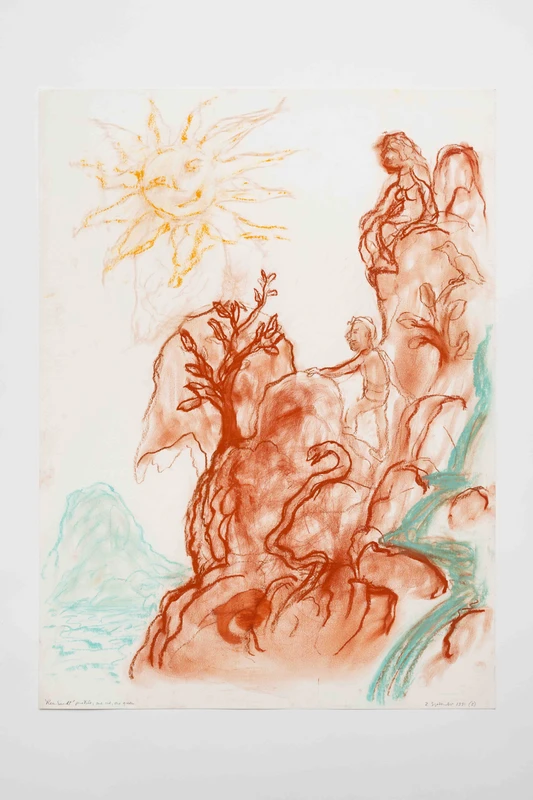Ken Kiff, The National Gallery Project
4 Apr-24 May 2025
PV 3 Apr 2025, 6-8pm


Hales is delighted to announce The National Gallery Project, a solo exhibition by Ken Kiff (b. 1935, Dagenham, Essex — d. 2001, London, UK) — a major British artist known for his visionary and distinct practice. Kiff’s first show at the gallery centres on works directly connected to his time as Associate Artist in Residence at the National Gallery between 1991-1993. He was the second artist to hold the position, following Paula Rego.
Primarily a painter, Kiff pursued the formal qualities of painting — of shape, line, texture, transparency and colour. His practice was driven by an exploration of the material and emotional properties of colour, viewing colour as image, and image as colour. Kiff would work on many pieces over years at a time – this process is exemplified by The Sequence, which spanned decades and 200 works, a ‘continuous flux’ of image and form which resembles a long episodic dream: allowing thoughts and imagery to spill over into the next work, creating reoccurring themes and symbolic motifs.
The Associate Artist Residency meant Kiff had a studio in the National Gallery for eighteen months with access to the collection day and night. The unique opportunity was not undertaken lightly as it meant abandoning accumulated works in progress at his home studio — unsettling a flow of thinking, in pursuit of a new direction. This would ultimately be freeing, and the completion of the residency led Kiff to a period of great imagination and creativity. During his time at the National Gallery, he made numerous drawings, notebook sketches, charcoals, monoprints and etchings, as well as starting fifty paintings. Reflective of his wider methodology and practice, he continued to work on paintings for many years after, revisiting the richness of ideas around imagery, material and colour. The exhibition at Hales shows a selection of works around key themes and techniques he continued to explore into the 1990s.